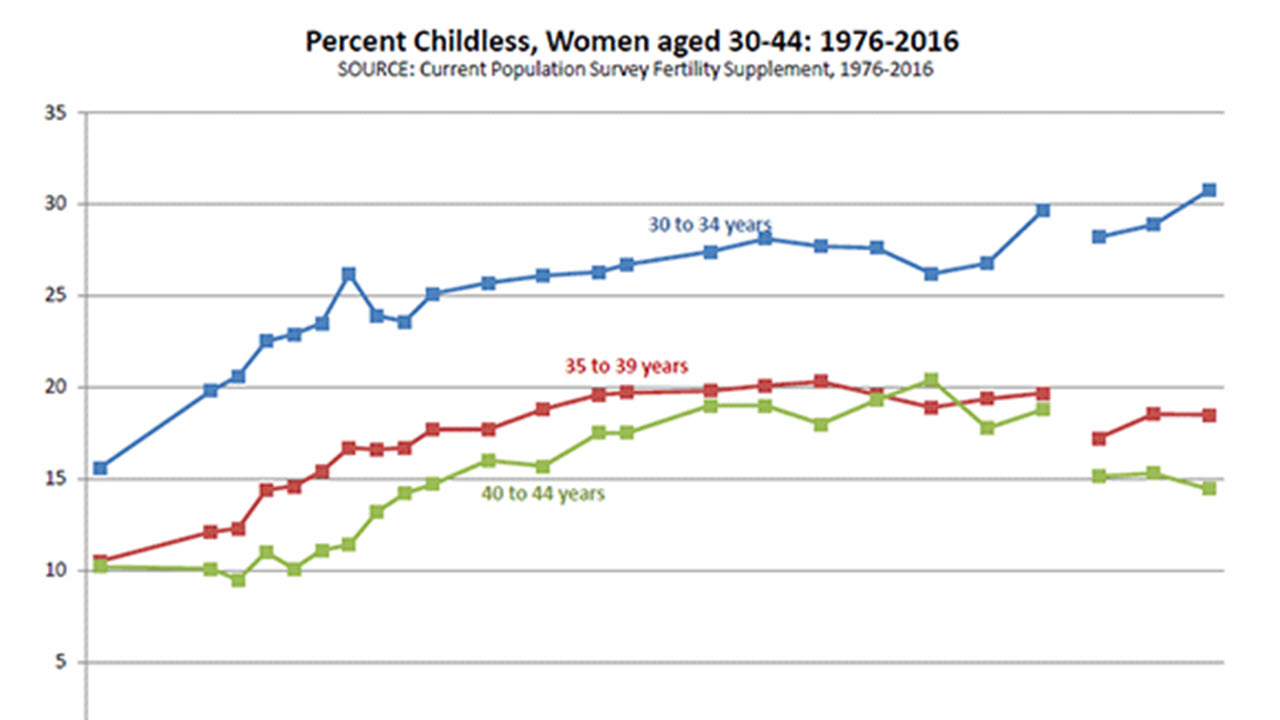Some Delay Childbearing, Others Opt Out
There has been a small but significant increase in the number of childless women in their early 30s over the past decade, according to recently released data from the U.S. Census Bureau’s Current Population Survey’s fertility supplement.
In 2006, 26.2 percent of women ages 30 to 34 were childless, meaning they had never given birth to a child. By 2016, that number had risen about 4 percentage points to 30.8 percent (see figure). Tables and figures show this change over time.
Some of the change in childlessness may be attributable to changes in data processing that were implemented in 2012. However, even under the new processing system, the rise in childlessness between 2012 and 2016 among women ages 30 to 34 is significant.
This increase does not necessarily mean that women are choosing not to be mothers because women in their early 30s may go on to have children later. These numbers simply reflect the increasing delay in childbearing found by others (Matthews & Hamilton, 2014). The Census Bureau’s recent report on young adults [PDF <1.0 MB] captures the trend of delaying marriage and childbearing among those aged 18 to 34.
Information about women’s fertility, including data from 1976 to 2016, can be found in the 2016 fertility tables.
These data are from the Current Population Survey’s bi-annual Fertility Supplement. The Current Population Survey, sponsored jointly by the U.S. Census Bureau and the U.S. Bureau of Labor Statistics, is the primary source of labor force statistics for the population of the United States. The survey also provides a wealth of other demographic, social and economic information.
Subscribe
Our email newsletter is sent out on the day we publish a story. Get an alert directly in your inbox to read, share and blog about our newest stories.
Contact our Public Information Office for media inquiries or interviews.
-
Families and Living ArrangementsMore Adults Living Without ChildrenAugust 09, 2017The number of married households has declined while the number of people living alone has risen.
-
PopulationHow Working-Age Female Veterans Compare With Female NonveteransSeptember 27, 2017New research highlights characteristics of women veterans in three age groups and compares them to nonveteran women.
-
EmploymentMedian Earnings for All Female Workers Highest in 40 YearsOctober 24, 2017The employment landscape changes when all workers — not just full time, year-round workers — are included in the research.
-
EmploymentThe Stories Behind Census Numbers in 2025December 22, 2025A year-end review of America Counts stories on everything from families and housing to business and income.
-
Families and Living ArrangementsMore First-Time Moms Live With an Unmarried PartnerDecember 16, 2025About a quarter of all first-time mothers were cohabiting at the time of childbirth in the early 2020s. College-educated moms were more likely to be married.
-
Business and EconomyState Governments Parlay Sports Betting Into Tax WindfallDecember 10, 2025Total state-level sports betting tax revenues has increased 382% since the third quarter of 2021, when data collection began.
-
EmploymentU.S. Workforce is Aging, Especially in Some FirmsDecember 02, 2025Firms in sectors like utilities and manufacturing and states like Maine are more likely to have a high share of workers over age 55.





